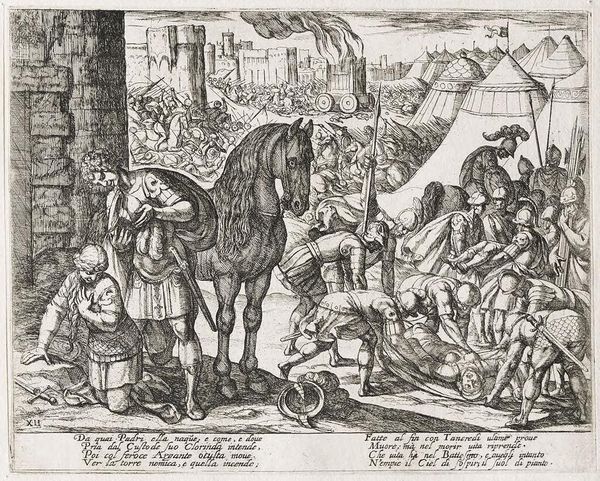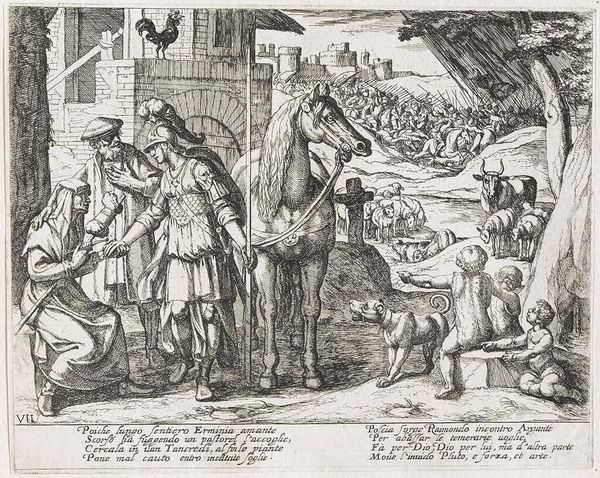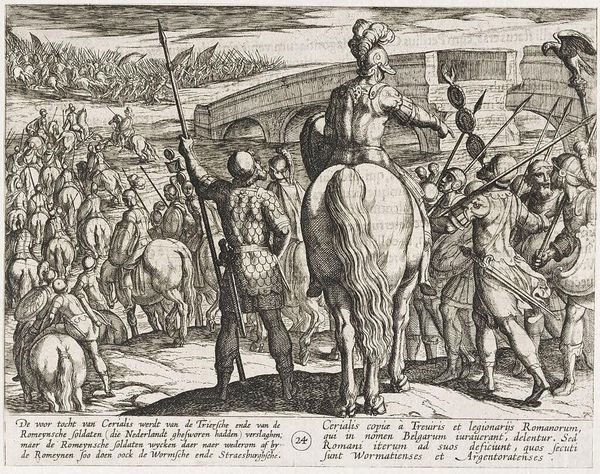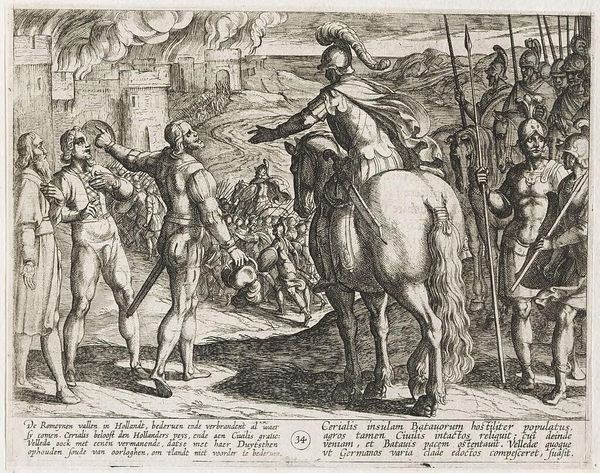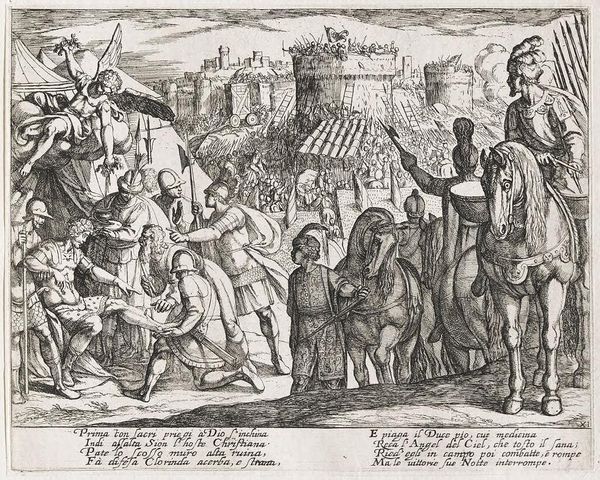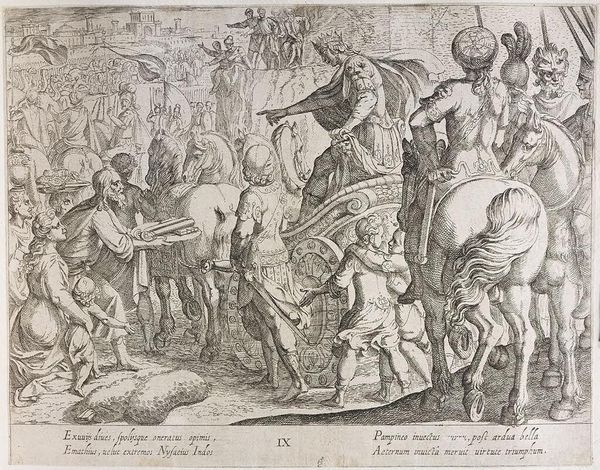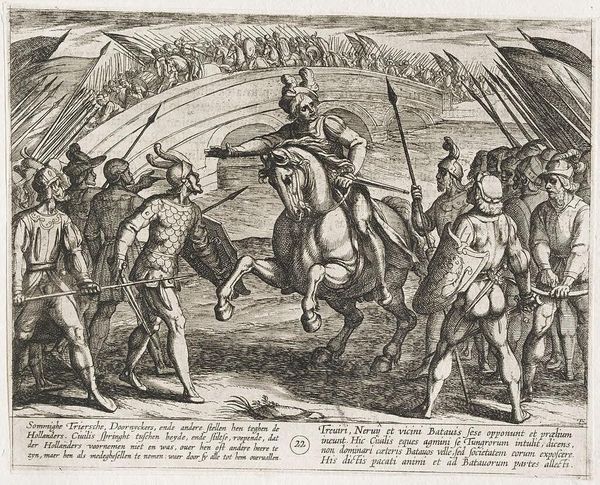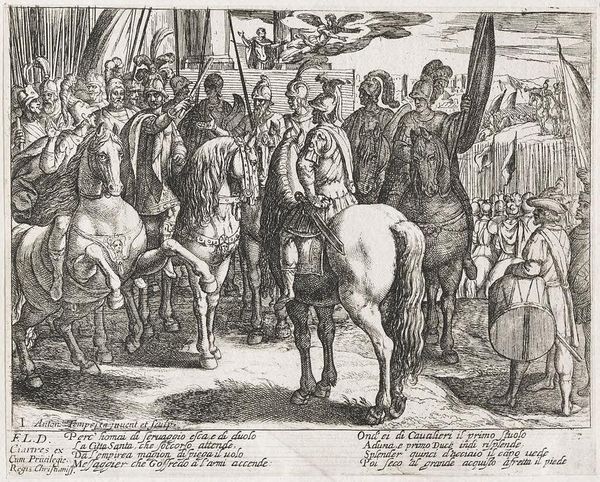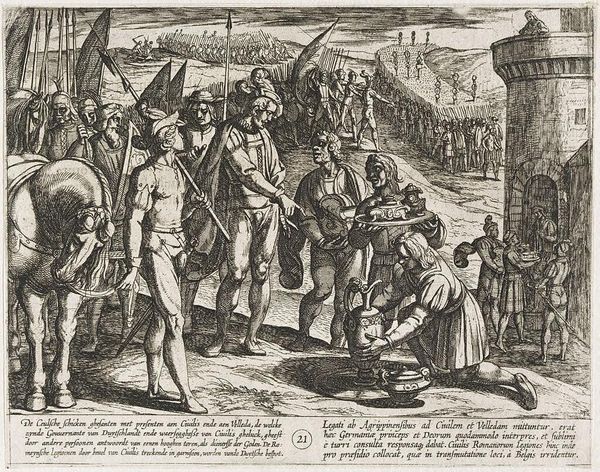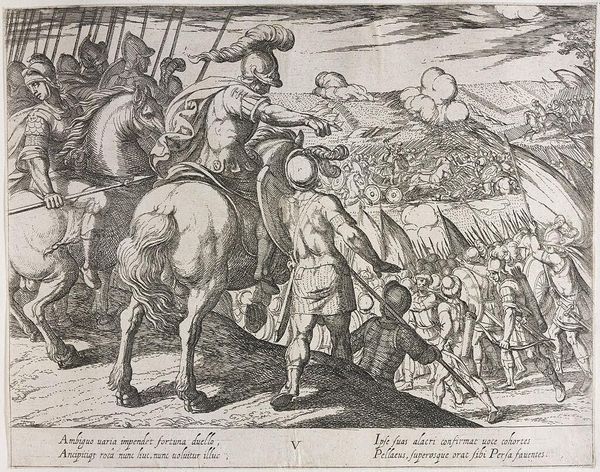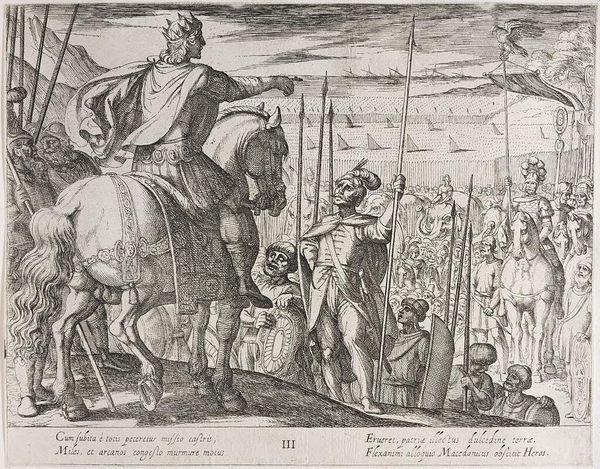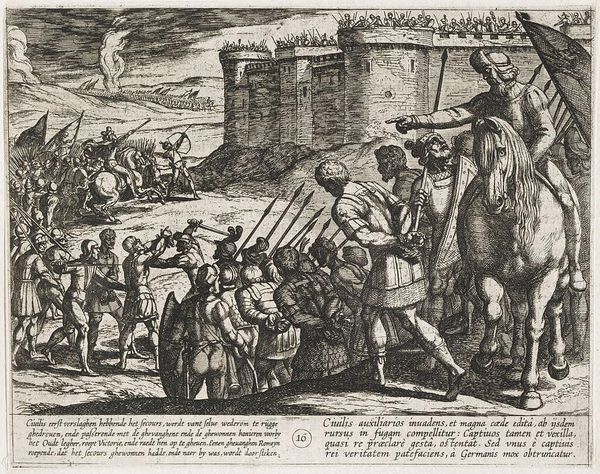
Copyright: CC0 1.0
Editor: This is Antonio Tempesta's "Illustration for Canto III." It looks like an etching. The composition is quite busy, filled with soldiers and horses. What's striking is how the figures seem to be both actively engaged in battle and posed dramatically. How do you interpret this contrast? Curator: The print's historical context is key. Tempesta, working around 1600, was catering to a public eager for visually stimulating narratives. The dramatic poses you noticed, the crowded composition – these aren't just aesthetic choices. They reflect the socio-political function of imagery at the time. It shows how art could glorify military campaigns and solidify cultural identities through grand historical narratives. Does that make sense? Editor: Yes, it does. I was so focused on the "art," that I missed its function in constructing narratives about power. Curator: Precisely! And it's in understanding that function that the art truly speaks.
Comments
No comments
Be the first to comment and join the conversation on the ultimate creative platform.
